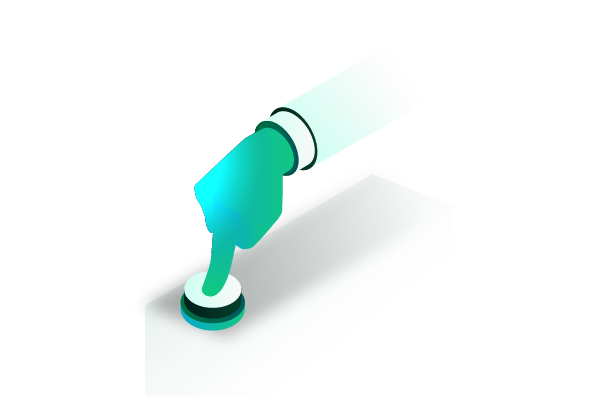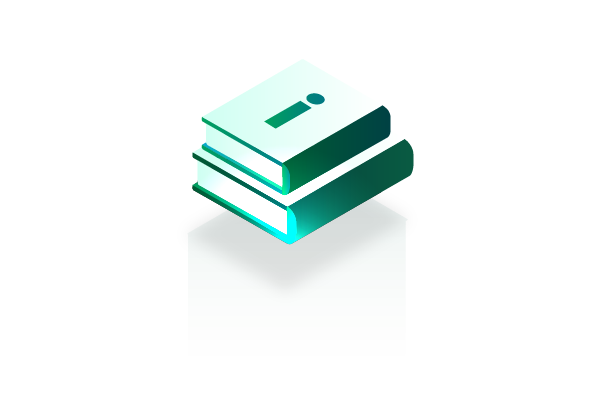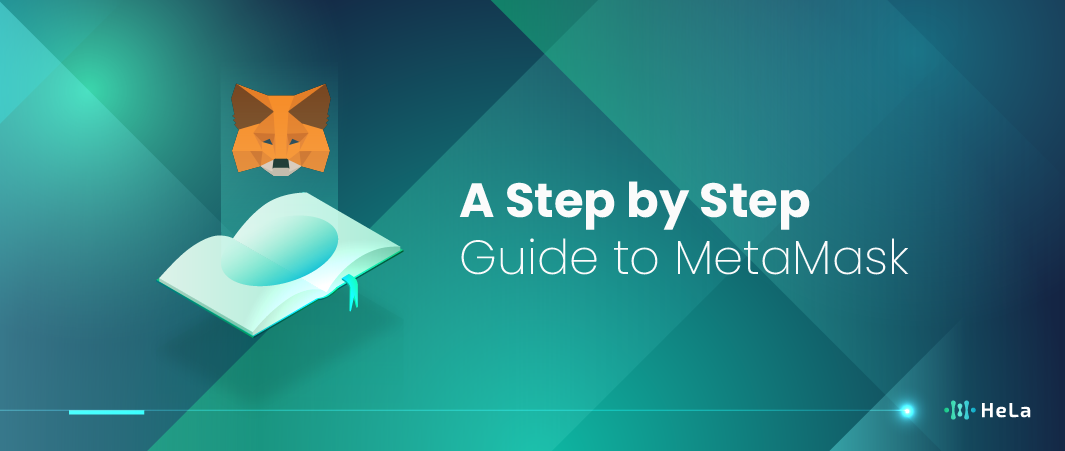Adding an Ethereum Virtual Machine (EVM) network to Metamask is a gateway to exploring decentralized applications (dApps) beyond the Ethereum mainnet. Whether you’re looking to interact with smart contracts, participate in decentralized finance (DeFi), or simply send and receive tokens on alternative networks, Metamask provides a seamless interface to manage your digital assets across multiple blockchains.
This guide will walk you through the process of adding an EVM-compatible network to your Metamask wallet, ensuring you have the tools needed to dive into the expansive world of blockchain technology. Understanding EVM networks is crucial for anyone involved in the blockchain space. With Metamask, adding these networks to your wallet is straightforward, allowing you to switch between them with ease.
In this article, we’ll guide you through the necessary steps to add an EVM network to your Metamask wallet. Whether you’re a seasoned blockchain enthusiast or new to the space, our easy-to-follow guide will provide you with the knowledge to expand your blockchain interactions. Let’s dive in and unlock the full potential of your Metamask wallet.
Getting Started with Metamask
Adding an Ethereum Virtual Machine (EVM) network to Metamask expands its functionality beyond the default Ethereum network, allowing users to interact with a broader range of blockchain applications and tokens. However, before diving into the process of adding new networks, it’s crucial to establish a foundational understanding of Metamask, ensuring a secure and informed experience.
Metamask: A Gateway to the Blockchain World
Metamask serves as a bridge between traditional web browsers or mobile devices and the Ethereum blockchain. It’s designed to simplify the access to blockchain applications, also known as DApps, without requiring users to run Ethereum nodes. Its user-friendly interface makes it an ideal choice for both beginners and experienced cryptocurrency enthusiasts.
Installation and Setup
To begin with Metamask, users must first install it. The installation process varies slightly depending on whether you’re using a web browser or a mobile device, but it generally involves downloading the Metamask extension from your browser’s extension store or the mobile app from your device’s app store.
Also Read: 10 Best Blockchain Fintech Companies to Consider in 2025
Once installed, the next step is to create a new wallet or import an existing one, followed by securing it with a strong password. Metamask will generate a secret recovery phrase, which is crucial for wallet recovery in case of device loss or forgetting the password. It’s imperative to store this recovery phrase in a secure location.
Security Measures
Securing your Metamask wallet is of utmost importance. Beyond setting a strong password and securely storing the recovery phrase, users are encouraged to familiarize themselves with best practices for digital security. This includes avoiding phishing sites, verifying the legitimacy of DApps before interacting with them, and using additional security measures such as hardware wallets for enhanced protection.
Preparing for Network Addition
With Metamask installed and secured, users are well-prepared to add new EVM networks. This capability allows Metamask users to engage with multiple blockchains that are compatible with the Ethereum protocol, including but not limited to Binance Smart Chain (BSC), Polygon (Matic), and others. Adding these networks enables users to explore a wider array of DApps, participate in different DeFi (Decentralized Finance) platforms, and manage a diverse portfolio of tokens.
Getting started with Metamask involves a straightforward installation process, followed by crucial steps to secure the wallet. Understanding these foundational aspects is key to safely and effectively expanding Metamask’s capabilities by adding new EVM networks, thereby unlocking access to a vast universe of blockchain applications and opportunities.
Understanding EVM-Compatible Networks

EVM-compatible networks represent a significant advancement in the blockchain ecosystem, offering a bridge for developers and users between Ethereum and other blockchain platforms. The Ethereum Virtual Machine (EVM) is a core component of Ethereum’s architecture, enabling the execution of complex smart contracts written in Solidity, Ethereum’s native programming language.
The compatibility of other blockchains with the EVM means that these networks can understand and execute smart contracts developed for Ethereum without requiring substantial modifications to the contract code. This interoperability is crucial for several reasons:
- Developer Familiarity and Efficiency: Developers who are already proficient in Solidity and the Ethereum development environment can easily transition their skills and projects to EVM-compatible networks. This reduces the learning curve and development time, allowing for faster deployment of applications across multiple platforms.
- Enhanced Scalability: One of the primary challenges Ethereum faces is scalability, with high transaction fees and slower processing times during peak periods. EVM-compatible networks often offer solutions to these issues, employing various consensus mechanisms and network structures to achieve higher transaction throughput and lower fees. This makes them attractive alternatives for deploying decentralized applications (dApps) that require faster and more cost-effective operations.
- Lower Costs: The operational costs on Ethereum, especially gas fees for transactions and smart contract execution, can be prohibitively high during periods of network congestion. EVM-compatible networks typically offer lower transaction fees, making it more viable for developers to deploy and maintain dApps, and for users to interact with these applications more frequently and economically.
- Increased Innovation and Choice: The proliferation of EVM-compatible networks encourages innovation within the blockchain space. Developers can leverage the unique features and advantages of different networks, such as improved privacy, faster settlement times, or specialized functionalities tailored to specific industries or use cases. This diversity enriches the ecosystem, offering users and developers more choice and flexibility.
- Cross-Chain Interoperability: EVM compatibility facilitates easier integration and interaction between different blockchain networks. This interoperability is a key component in building a more interconnected and efficient blockchain ecosystem, where assets and data can seamlessly flow across chains, unlocking new possibilities for decentralized finance (DeFi), gaming, and other applications.
Adding EVM-compatible networks to your Metamask wallet allows you to interact directly with dApps deployed on these networks. Metamask, a popular Ethereum wallet and gateway to blockchain apps, can be configured to connect to any EVM-compatible network by simply adding the network’s details (such as the network name, RPC URL, chain ID, and currency symbol).
This enables users to manage their assets across multiple blockchains within a single wallet interface, streamlining the user experience and expanding access to a broader range of decentralized applications and services.
How to Add an EVM Network to Metamask

To add an EVM (Ethereum Virtual Machine) network to MetaMask, follow these detailed steps. This process allows you to interact with blockchains compatible with Ethereum’s architecture directly from your MetaMask wallet.
Step 1: Open MetaMask Extension
Launch MetaMask: Click on the MetaMask extension icon in your browser. If you haven’t installed MetaMask yet, visit the Chrome Web Store (or the store for your browser), search for MetaMask, and install it.
Step 2: Access Settings
Go to Settings: Once the MetaMask wallet is open, click on the profile icon at the top right corner, then select “Settings” from the dropdown menu.
Step 3: Network Selection
Select Networks: In the Settings menu, find and select the “Networks” option. This will take you to a page where you can view existing networks or add a new one.
Step 4: Add Network
Add Network Button: At the bottom of the Networks page, click on the “Add Network” button to start adding a new EVM network.
Step 5: Enter Network Details
Input Network Information: A form will appear where you’ll need to enter the network’s details. These include:
- Network Name: The name of the network you’re adding.
- New RPC URL: The RPC (Remote Procedure Call) URL of the network. This is how MetaMask will communicate with the blockchain.
- Chain ID: The unique identifier of the network. This is critical for ensuring transactions are signed and broadcast to the correct network.
- Currency Symbol: The symbol of the network’s native currency (e.g., ETH for Ethereum).
- Block Explorer URL (optional): The URL of a block explorer for the network, allowing you to view transactions and accounts.
Step 6: Save and Use
Save and Use: After filling in all the necessary details, click “Save.” The network will now be added to your MetaMask, and you can switch to it by clicking on the network dropdown at the top of the MetaMask interface.
Additional Tips:
- Finding Network Details: You can find the required network details (RPC URL, Chain ID, etc.) on the official website of the blockchain you’re trying to add or from reputable community resources.
- Security Reminder: Always ensure the network details are accurate and from a trusted source to avoid security risks.
By following these steps, you can add any EVM-compatible network to your MetaMask wallet, expanding your ability to interact with various blockchain projects and decentralized applications.
Exploring the Added Network
Exploring the added network in your Metamask wallet opens up a new realm of possibilities within the blockchain ecosystem. After successfully adding a new Ethereum Virtual Machine (EVM) compatible network, you’ve essentially unlocked access to a diverse set of decentralized applications (dApps), various tokens unique to that network, and the ability to engage in transactions that go beyond the Ethereum mainnet. This exploration is crucial for leveraging the full potential of the decentralized web.
Finding and Interacting with dApps
Decentralized applications (dApps) are at the heart of what makes blockchain networks thrive. These applications are not controlled by any single entity and offer various services from finance (DeFi) to gaming and beyond. On a new EVM network, discovering dApps can be an exciting venture. You can find them through community forums, social media, or dApp aggregator websites that list popular and newly launched applications.
Once you’ve identified a dApp you’re interested in, you can interact with it directly through your Metamask wallet by connecting your wallet to the dApp’s website. This process usually involves reviewing and approving a connection request, which enables the dApp to interact with your wallet for transactions.
Managing Tokens
Every EVM network has its own set of tokens that can be used for a variety of purposes, including transactions, governance, staking, and as part of dApp interactions. Managing these tokens effectively is key to maximizing your experience on the new network. Metamask allows you to view, send, and receive these tokens directly within the wallet interface.
Adding a token to your wallet usually requires you to input the token’s contract address, which can be found on the network’s official documentation or through reputable token listing platforms. Keeping track of your tokens and their respective values can help you make informed decisions about your investments and interactions on the network.
Making Transactions
Transactions on a new EVM network can range from simple token transfers to complex smart contract interactions. Each transaction requires a fee, paid in the network’s native currency, to compensate for the computational energy required to process the transaction. Metamask simplifies the transaction process by calculating the estimated gas fee and allowing you to adjust it based on your urgency level. It’s important to understand the impact of gas fees on your transactions, especially during periods of high network congestion when fees can be significantly higher.
Exploring a new network through Metamask is a journey into the vast ecosystem of blockchain technology. By learning how to find and interact with dApps, manage tokens, and make informed transactions, you become more than just a participant; you become an active contributor to the network’s ecosystem. This exploration not only enhances your understanding of blockchain technology but also empowers you to take full advantage of the decentralized web’s potential.
Troubleshooting Common Issues
When adding and utilizing new networks, users may face a range of issues that can hinder their experience. This section is dedicated to identifying and solving such common problems to facilitate a seamless integration and use of new networks. Here are some of the issues that will be addressed, along with their solutions:
- Connection Errors: These can occur due to incorrect network settings, firewall restrictions, or server downtimes. Solutions might include verifying network settings, checking for correct DNS configurations, ensuring that the network is compatible with your device, or temporarily disabling firewall or antivirus software to test connectivity.
- Token Display Issues: Sometimes, after adding a new network, tokens may not display correctly or at all. This could be due to synchronization issues or incorrect contract addresses being used. To resolve this, users can try refreshing the wallet, ensuring the correct network is selected, or double-checking the token contract address for accuracy.
- Slow Network Performance: High traffic or inefficient network configuration can lead to slow performance. Users can switch to a different node, if available, or adjust their network settings for better performance. Additionally, checking for network updates or patches that improve efficiency can also be beneficial.
Also Read: 12 Best Non Custodial Wallets to Know in 2025
- Incompatibility with Wallets or Services: Certain networks might not be fully compatible with all wallets or services, leading to issues in transactions or interactions. The solution involves checking for compatibility before adding the network, updating the wallet or service, or using alternative platforms that support the network.
- Security Concerns: New networks can sometimes introduce security vulnerabilities. Users should ensure they are connecting to trusted networks and use security practices like enabling two-factor authentication, using a hardware wallet for significant assets, and keeping software up to date to mitigate risks.
This guide aims to equip users with the knowledge to troubleshoot these common issues effectively, ensuring a more reliable and enjoyable experience with new networks. By understanding and applying these solutions, users can overcome challenges and make the most of the opportunities presented by emerging networks.
Conclusion
Expanding your Metamask wallet to include EVM-compatible networks opens a world of possibilities in the blockchain space. By following this guide, you’ve taken a significant step towards becoming a more versatile participant in the crypto ecosystem. We hope this article has demystified the process and encouraged you to explore the vast opportunities across different blockchains.
Remember, the blockchain world is constantly evolving, and staying informed about new networks and developments is crucial. As you become more familiar with using Metamask and interacting with various EVM networks, you’ll discover new ways to engage with digital assets and decentralized applications. Embrace the journey, and let your curiosity lead you to discover the full potential of blockchain technology.
Disclaimer: The information provided by HeLa Labs in this article is intended for general informational purposes and does not reflect the company’s opinion. It is not intended as investment advice or recommendations. Readers are strongly advised to conduct their own thorough research and consult with a qualified financial advisor before making any financial decisions.

Joshua Soriano
I am Joshua Soriano, a passionate writer and devoted layer 1 and crypto enthusiast. Armed with a profound grasp of cryptocurrencies, blockchain technology, and layer 1 solutions, I've carved a niche for myself in the crypto community.
- Joshua Soriano#molongui-disabled-link
- Joshua Soriano#molongui-disabled-link
- Joshua Soriano#molongui-disabled-link
- Joshua Soriano#molongui-disabled-link

